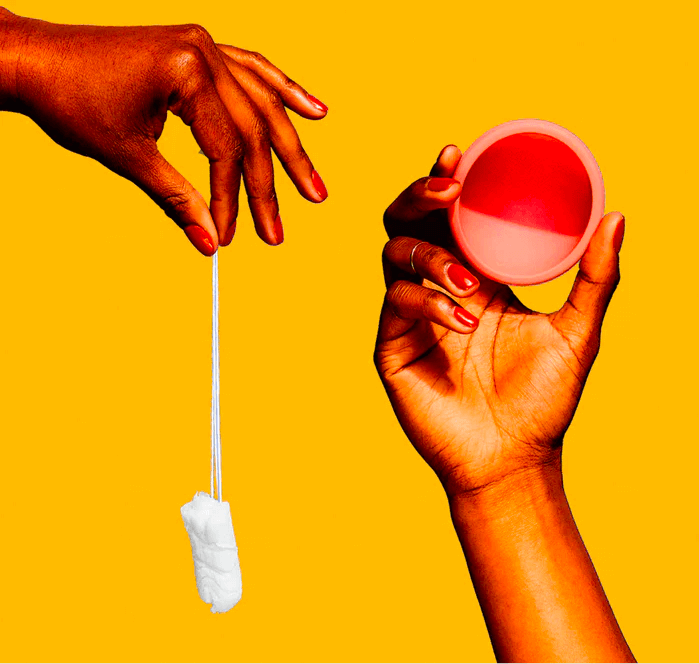If you're feeling pain around your pelvic region, struggle with everyday tasks, or have problems when you need to go to the loo, you’ll likely benefit from pelvic floor physical therapy.
If you’re not, well, these are only a few of the signs suggesting you need this therapy. But there are still a couple of other things you should know. So let's take a closer look at pelvic floor physical therapy and the signs that you would benefit from it.
What's Pelvic Floor Physical Therapy?
Pelvic floor physical therapy is a type of physical therapy that focuses on your ligaments, tissues, and pelvic floor muscles. Its goal is to increase your strength and mobility while decreasing your pain and suffering.
There’s no surgery required with this therapy. Instead, it includes physically exercising your pelvic floor muscles with Kegel exercises and other approaches.
What are Kegel exercises? Kegels are workouts that strengthen your pelvic floor muscles. They feature repetitive, prolonged, fast voluntary muscle contractions—but not anyone can do them. The physiotherapist who does the therapy must have specialized training—so be sure to ask them if they can do it before signing up.
But before you get the therapy, you might wonder why this physical therapy concentrates on your pelvic floor's muscles, ligaments, and connective tissues. It's easy! These areas support your pelvic organs (such as your uterus). They also help with sexual activity and stop you from leaking when you gotta go.
But here’s an important fact: It’s best to address pelvic floor problems early, or you risk getting more severe illnesses, including pelvic organ prolapse (POP).
6 Signs You Need Pelvic Floor Physical Therapy
1. You're Experiencing Bowel and Bladder Issues (Including Incontinence)
If you're suffering from bowel or bladder issues, it's a good idea to seek pelvic floor physical therapy (even if you don’t want to talk about it).
These are some of the symptoms to look out for:
- Urine and fecal incontinence: When you sneeze, laugh, yell, exercise, or cough, you may unintentionally leak or pass stool/urine. This is due to weak pelvic floor muscles, which cannot hold back your bladder or bowel movements.
- Pain while peeing or pooping: It’s not comfortable to talk about, we know, but pain while you’re peeing or pooping is usually a good sign you need pelvic floor therapy.
- Pain in other areas of your reproductive system: Particularly when you’re having sex, moving heavy objects, or working out. This pain may not indicate something serious, but if left unchecked, it can cause chronic inflammation—so it’s not a good idea to ignore it.
- Urinary and bowel urgency: Ever had an uncontrollable, sudden desire to pee? If you do, and it ends in embarrassing moments, then it’s a good sign you need therapy.
2. You're Under Constant Pelvic Pain
Do you ever get sharp pain around your pelvic area? It’s nothing dire, but seeing a pelvic floor therapist is still a good idea. It’s better to play it safe…as you know, better safe than sorry.
In most cases, constant ongoing pain in your pelvic region may indicate pelvic floor dysfunction, which is fixable with pelvic floor physiotherapy. Usually, pressure points on your muscles are causing your pelvic floor pain (more so if they are weakened or injured).
And this happens to the best of us! So, rest assured that pelvic floor therapy will aid in regenerating injured tissues and ligaments, alleviating your pain and suffering. Basically, you’ll be back to partying in no time!
So, if you're tired of dealing with that annoying pelvic pain, why not give a pelvic floor physiotherapist a try?
3. You're Experiencing Sexual Dysfunctions
Now let's talk about something that many people may not be used to discussing: sexual dysfunction.
Do you ever feel pain during sex, lack sexual desire, or have trouble reaching orgasm? You’re not facing this alone - these are common symptoms that many people experience.
Did you know that the pelvic area is crucial in sexual functioning? It houses your sexual organs and helps you move during intercourse, making sex more pleasurable and exciting.
However, if the pelvic floor’s muscles, tissues, and ligaments become damaged, it can impair the movement and normal functioning of the pelvic organs, leading to sexual dysfunction.
But here's the good news - pelvic floor physical therapy can help!
By healing injured pelvic floor muscles and reducing discomfort, you can improve your sexual functioning and enhance your overall experience. Pelvic floor therapists are experts in this area and can work with you to develop a personalized treatment plan to address your specific needs.
So, if you're struggling with sexual dysfunction, don't suffer in silence. Consider contacting a physical therapist to help you get back on track and start enjoying sex again. You deserve to feel good.
4. You're having Pregnancy and Postpartum Problems
Did you know that over 20% of new moms experience pelvic floor disorders (PFDs)? That’s according to research from Lifespan and the National Center for Biotechnology Information (NCBI) [2].
So, what happens?
During pregnancy, hormonal changes cause the pelvic muscles to loosen, and when combined with the baby’s weight, this can weaken the pelvic floor and increase the likelihood of PFDs.
The good news is that there are ways to address this:
- Physical or manual therapy is a great option for new moms who want to rebuild the strength of their pelvic floor muscles after delivery.
- With specific exercises and targeted therapy, pelvic floor physical therapy can also help strengthen the pelvic area’s muscles, tissues, and ligaments, relieving any pelvic pain or discomfort.
And that’s all we want...to feel like us again!
So, if you're a new mom dealing with PFDs or pelvic pain after giving birth, don't suffer in silence. Pelvic floor physical therapy is a safe and effective way to address these issues and get you back to feeling like yourself again.
5. You're Constipated
If you're having trouble emptying your colon and are experiencing thin stool, acute discomfort during excretion, or the sensation of incomplete toilet trips, it could be a sign of PFDs.
This is usually caused by a lack of coordination between your pelvic floor muscles and the abdominal muscles, but it’s quite normal and can happen to anyone.
In fact, 50% of chronic constipation patients also suffer from pelvic floor disorders (PFDs). According to a study by the NCBI, the two are often linked [3].
Fortunately, pelvic physical therapy can help!
By guiding you through a series of exercises, pelvic floor physiotherapy can help you relax your abdominal muscles and ease bowel movements. This can alleviate the discomfort associated with chronic constipation and improve your overall quality of life.
So, stop struggling with chronic constipation or you’ll be putting yourself in danger of potential PFDs! Try pelvic floor physiotherapy to help address any underlying pelvic floor issues and start feeling better.
6. Your Leg or Feet Feel Numb
This may come as a surprise, but did you know that pelvic floor dysfunction can sometimes cause poor blood circulation?
It's true! If you're experiencing any of the symptoms listed below, it’s time to consider pelvic floor manual therapy:
- Numbness in your feet or legs
- Pale or yellow skin
- Fatigue
- Cold feet and legs
The therapy helps improve blood circulation in and out of your pelvic organs. This can improve your organ’s overall functionality.
You might also find that symptoms of PFDs, like pelvic organ prolapse, will start to alleviate.
Remember: Don't hesitate to seek help if you're experiencing any of these symptoms. Pelvic floor physical therapy could be just what you need to start feeling better and living your best life!
(Image source: Pexels)
Now, with all of the above in mind, this table summarizes the most frequent pelvic floor dysfunctions:
But did you also know that there are certain things that can put you at risk for developing PFDs? Let’s take a look at that in another table below.
The Risk Factors For Pelvic Floor Dysfunction
Benefits of Pelvic Floor Physical Therapy
If you're experiencing symptoms of pelvic floor dysfunction, it's important to know that seeking pelvic floor physical therapy as soon as possible can have some pretty great benefits!
These benefits include:
- Improvements in bladder and bowel control.
- Relief from any pain you're experiencing in your pelvis or lower back.
- Improved sexual function, which can make a big difference in your quality of life.
- Faster recovery process without pain after childbirth.
The best part? Pelvic floor physical therapy is a non-invasive treatment, which means it's a great alternative to surgery. So if you're dealing with PFDs and looking for a safe and effective way to address them, pelvic floor physical therapy is just what you need!
3 Ways To Prevent Pelvic Floor Dysfunction
That said, prevention is always better than cure. If you want to reduce your risk of experiencing chronic pelvic pain, sexual dysfunction, incontinence, and constipation, there are three things you can do:
1. Regular Pelvic Floor Exercises
If you want to avoid common PFDs like POP, there's a simple pelvic floor strengthening exercise we discussed above: Kegels!
And the best part? You can do Kegels just about anywhere, whether you're at home, at the gym, or even at a facility managed by a pelvic floor physical therapist.
Here's how it works: Kegel exercises involve relaxing and contracting your pelvic muscles to train them to withstand pressure and support your pelvic organs. Here’s a beginners guide:
It's a great way to strengthen your pelvic muscles and reduce your risk of developing PFDs. Plus, it's a quick, fun, and easy exercise that you can do while you're watching TV or even sitting at your desk!
2. Maintain Proper Lifting Technique
When you lift heavy objects incorrectly, you risk damage to your pelvic floor. Basically, it can put an added strain on your pelvic floor muscles—causing them to weaken and increasing your risk of developing PFDs.
Here’s a quick guide on how to properly lift heavy objects:
- Ensure your feet are shoulder width apart and squat in front of the object.
- Maintain a good posture and slowly lift the object. Your chest should be out and your back should be straight. Don’t lift the object higher than your belly button.
- Take small steps with the object and avoid putting any pressure on your back or abdomen muscles.
You also need to maintain the same care when putting heavy objects down. 🙂
3. Use nixit Disc-shaped Menstrual Cups
Your estrogen levels are exceptionally low during periods, causing your pelvic floor muscles to feel weak and fatigued. This can lead to pelvic floor problems. PFDs are also caused by the pain and strain experienced during this time.
Fortunately, nixit provides a terrific solution to reduce strain on your pelvic organs while also offering ultra-comfort.
So how does it work? Unlike traditional menstrual products, which can inflict pressure on the pelvic floor, nixit's disc-shaped menstrual disc fits snugly in your vagina. It gathers all of the blood without pain or discomfort.
Thanks to its ultra-soft material and flexibility, you may not even notice it’s in your vagina.
As Eve W. says it:
We also offer products to help clean your menstrual cup during and after periods, such as the menstrual cup wipes. Additionally, if you want everything in one convenient package, the nixit starter bundle is perfect.
If you're new to nixit menstrual discs, our A to Z beginner guide will get you on your way to stress-free menstruating!
If you still have more questions, don't hesitate to contact us.
Sources
[1] https://medicine.uiowa.edu/content/study-data-25000-women-finds-least-32-have-pelvic-floor-disorder







